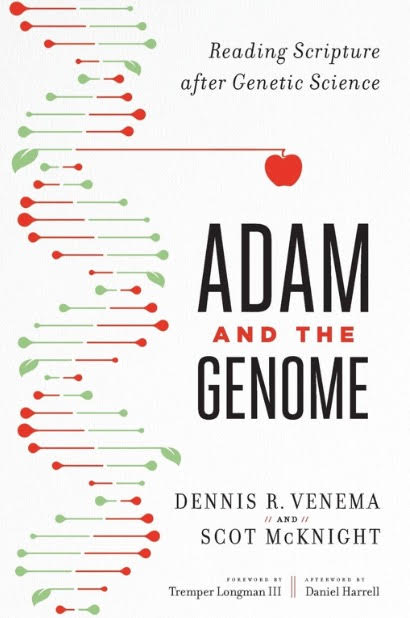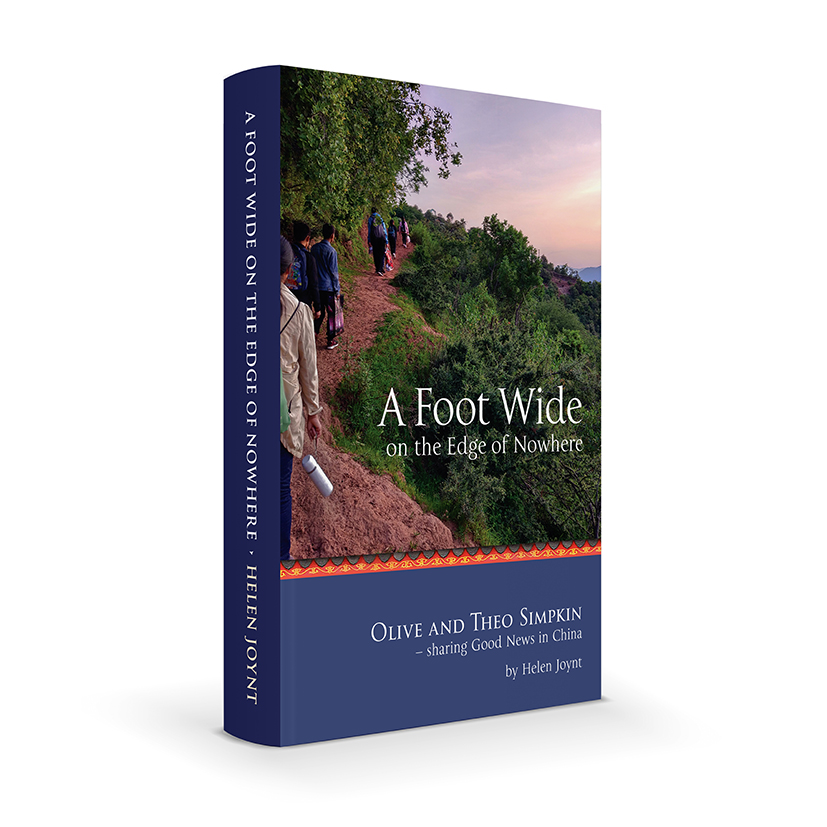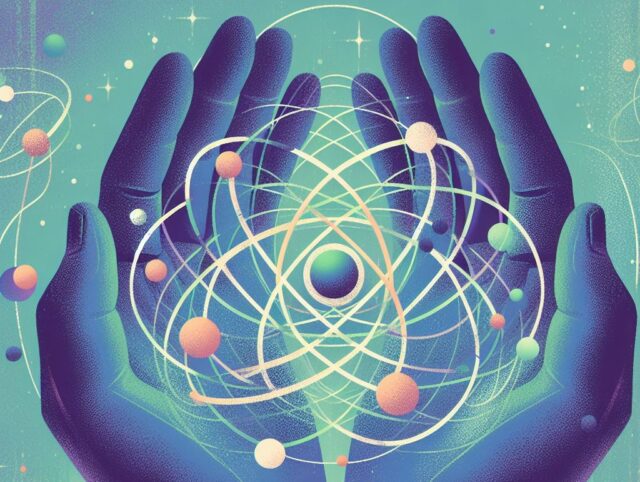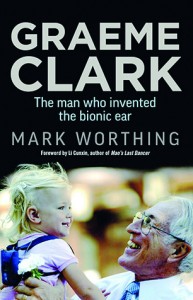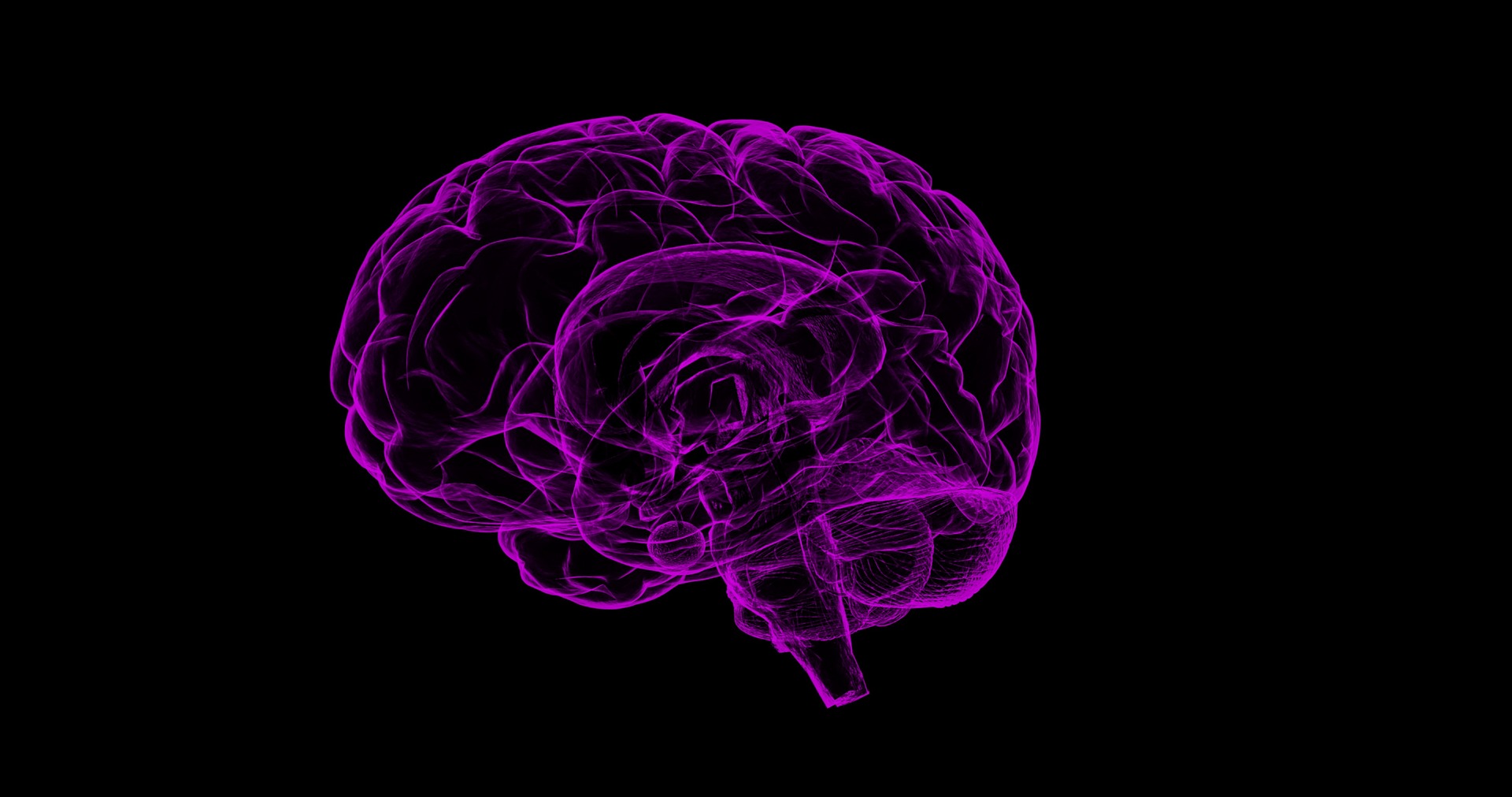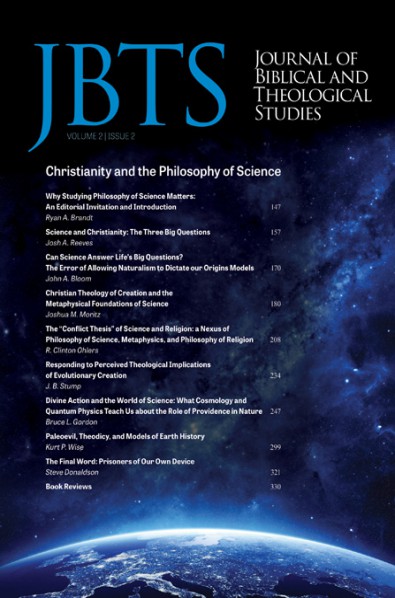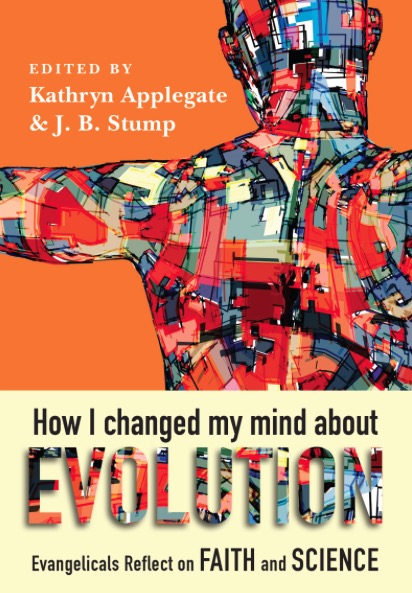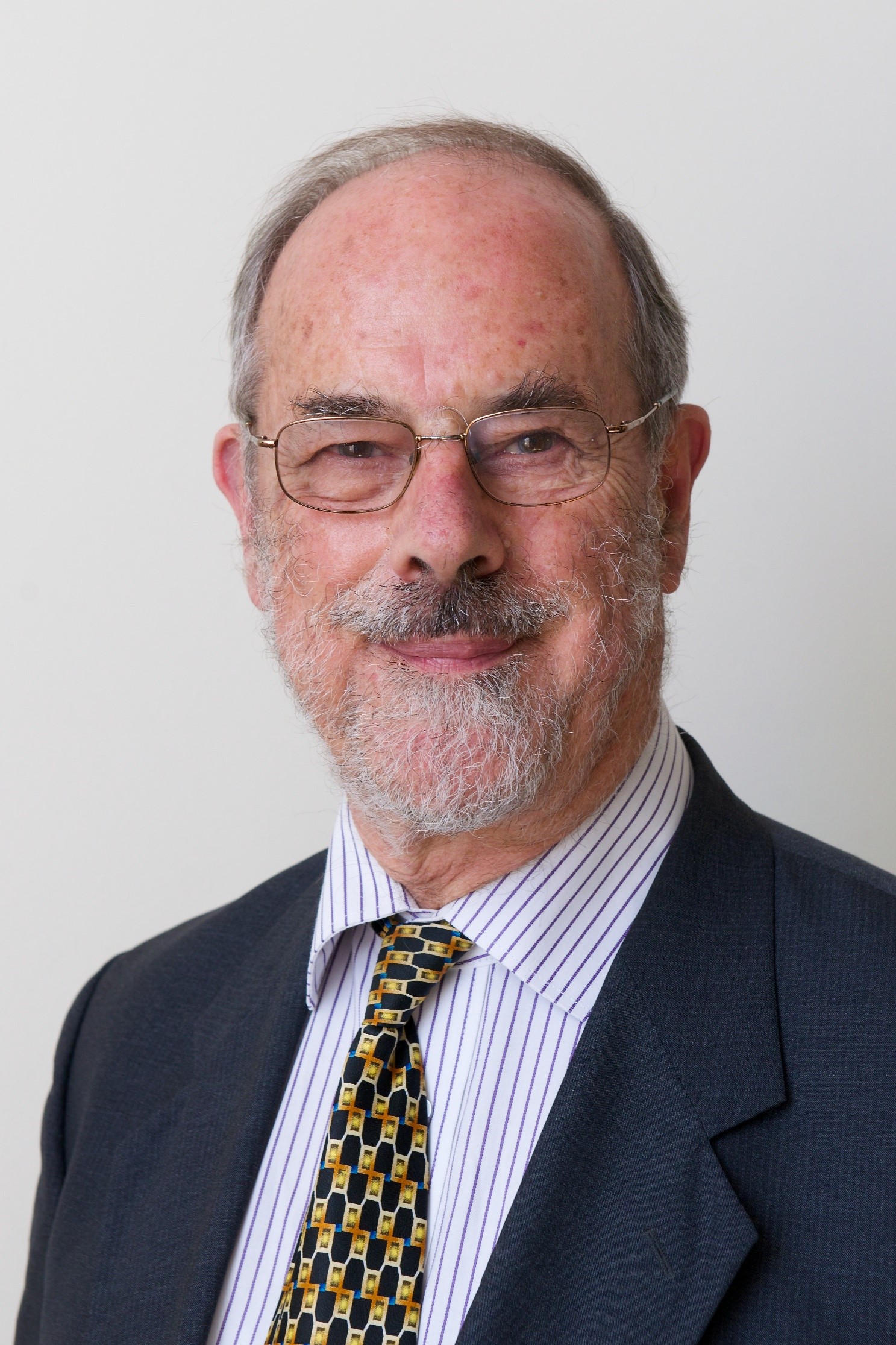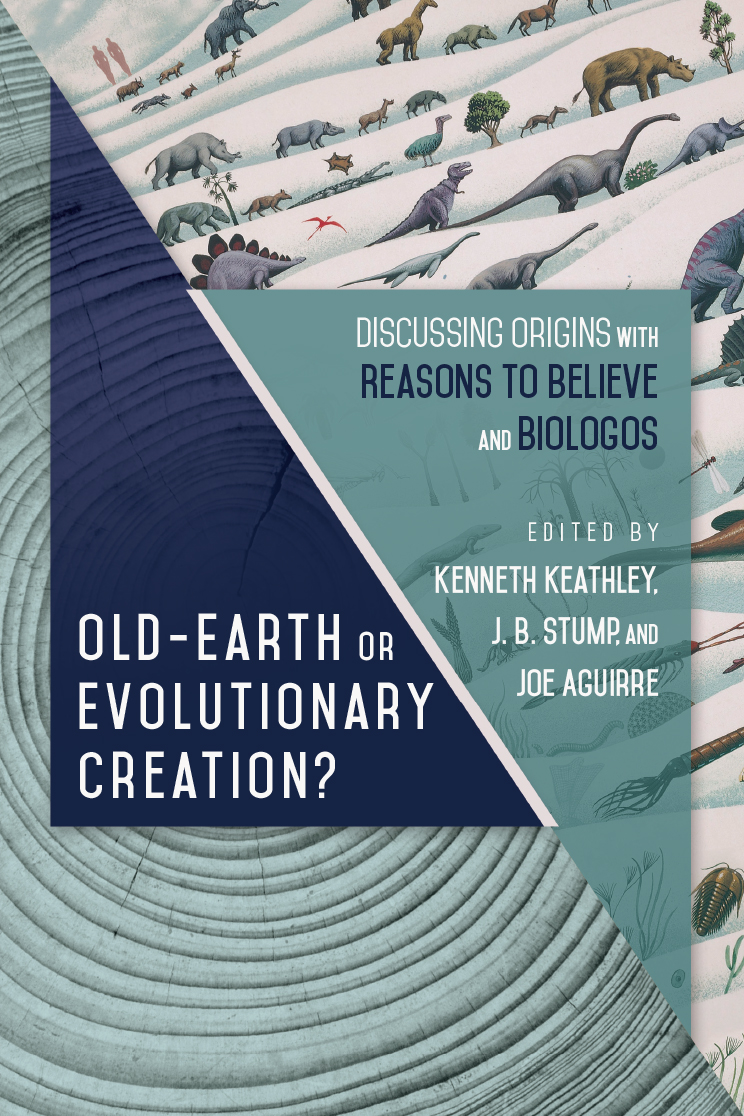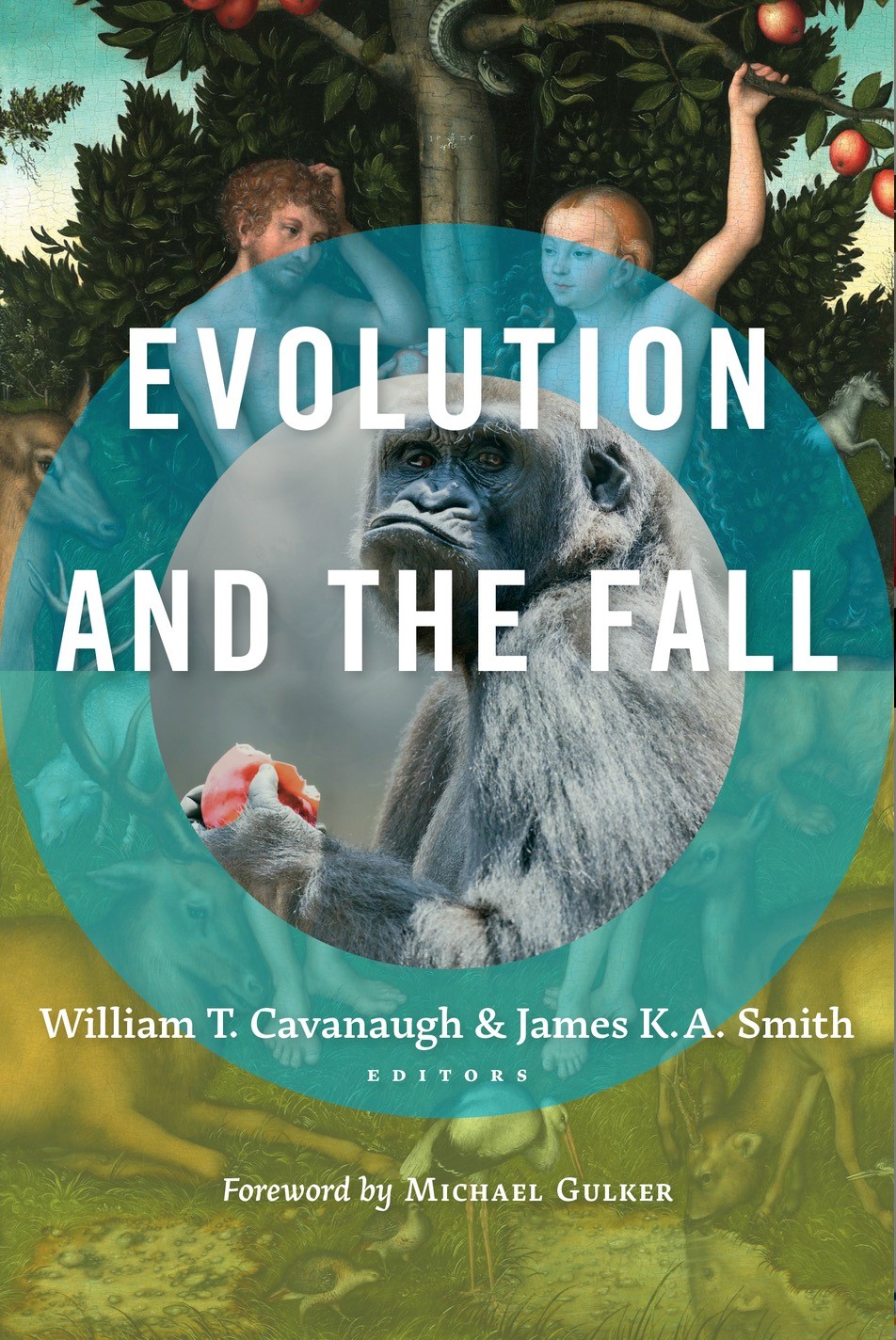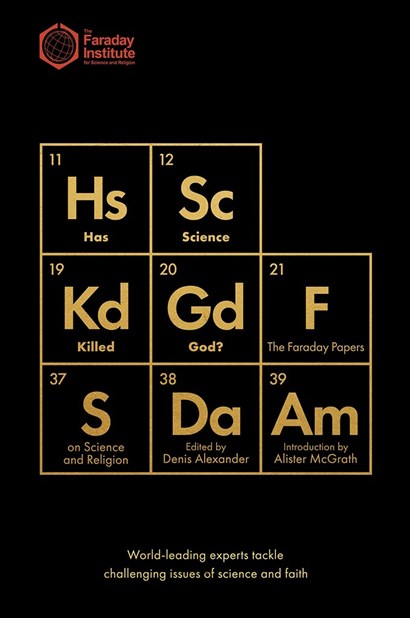


Biotechnology and Medical Ethics: Thinking biblically about contemporary medicine
Allan J Day, April 2002
Biotechnology and Medical Ethics
Thinking biblically about contemporary medicine
Allan J Day
Allan J Day is Emeritus Professor of Physiology, the University of Melbourne, a Senior Academic Fellow, Ridley College, and a Fellow of ISCAST.
Abstract
The rapid development of medical technology has created considerable ethical concern relating to the use of such technology. It is now possible to perform abortion for all sorts of reasons, to produce babies from all sorts of parents, to ensure survival for all sorts of humans and by genetic engineering and cloning to design all sorts of children. Such possibilities—what we are able to do—raise ethical questions of what we ought to do. In seeking to explore this problem, some biblical principles are outlined. They relate to those derived from our common humanity (creation theology), to those associated with our living as a community (covenant theology), and to those that call for justice distributed and care for the disadvantaged (Old Testament Prophets) as well as those derived from the New Testament ethic of care and compassion. In applying these principles however it is not always easy to get clear cut answers and many questions remain. One of the most cogent is the question of whether the embryo is fully human—a person, and what criteria determine such humanity. Some of these questions, on which Christians and others disagree are considered and some basis suggested for arising at satisfactory conclusions.
Key words
Ethics, abortion, cloning, stem cells, embryo, human, humanity, technology, genetic, IVF, creation theology, person
Introduction
Some future possibilities—Gattaca: A new world order
Some of you may have seen the recent film Gattaca. It is a sort of updated version of Aldous Huxley’s Brave New World or George Orwell’s 1984. The film portrays a time in the ‘not too distant future’ where children are designed to order—if you can afford the technology— and where discrimination is based on one’s DNA pattern. This pattern is monitored by instantaneous DNA testing at check points which reject entry to so called ‘non-valids’.
The story line follows the struggle between two brothers, one born naturally and the other whose every characteristic has been genetically selected to eliminate the possibility of disease and to maximise physical, athletic and intellectual superiority. One of the opening scenes depicts the parents, seated with the advising doctor around the fertilised ovum, and a sort of keyboard, together making decisions about what properties to key in. Rather like selection of different flavours at an ice cream parlour.
Children have been turned into commodities to be ordered like cars or curtains according to colour, style and price and doctors turned into vendors.
We may well ask: ‘Is such a scenario feasible or to be anticipated in the near future and what sort of ethical dilemmas does this pose for the Christian?’. It is fair to say that modern medicine is not too far away from the picture envisaged.
Some rapid developments
The genetic technology revolution has happened explosively over the last 50 years.
In 1953, Watson and Crick described the function of DNA in determining every property of our life. It was perhaps the most important biological discovery of the 20th C.
1973 saw the introduction of genetic engineering, that is, the ability to change our DNA by splicing in alternative DNA sequences. It produced a temporary moratorium on the procedures for two years. The techniques however are now used regularly in animal procedures, but not at present for changing human germ cells.
1979 saw the birth, at Addenbrookes Hospital in Cambridge, of Louise— the first baby to be conceived outside the body by In Vitro Fertilisation techniques. It is now an everyday procedure.
In 1997 the cloning of Dolly the sheep, by adult somatic cell nuclear transfer was dramatically announced to the world press. It opened the way for the cloning of humans as part of the treatment armamentarium for infertility—a possibility that is being currently promoted by some rogue infertility clinics.
In 2000 (well ahead of schedule) the first goal of the Human Genome program was achieved. The draft map of human DNA was reported. It was the draft of our basic biological humanity and made possible the determination of which genes cause disease or other properties and how to change them. Such information opens up the possibility of treating genetic diseases, but also of embracing the Gattaca scenario.
These dramatic advances in Medicine and medical technology have raised significant ethical issues for the thinking Christian. Many may touch our families directly and all certainly touch our society.
More than ever before what we are able to do in medicine prompts the urgent question of what we ought to do.
Let us consider therefore a number of possibilities that are with us at the present time.
Some biotechnology possibilities: what are we able
to do?
Abortion—for all sorts of reasons
Abortion is now technically a relatively safe procedure—at least for the pregnant mother! It is promoted however for several reasons. The health of the mother is the basic legal provision on which the current law operates. It has been extended however to include social reasons which now form by far the most common indication: abortion for unplanned pregnancy, in the interests of single mothers, or in the interests of ‘pro choice’—the right of a mother to choose.
Increasingly however the medical technology revolution is influencing the pressure for abortion with the increasing ability to detect genetic abnormalities or characteristics before birth. Let me illustrate.
Chorionic Villus Section (CVS) and Amniocentesis are both invasive techniques to get information about the foetus during intra uterine life. CVS is now used very commonly to detect foetal abnormality (of increasingly sophisticated forms) at 10–12 weeks of pregnancy, i.e. at a stage where abortion is technically feasible and pressure may be put to go down this course.
Five years ago our daughter was pregnant with our 7th grandchild. CVS was done as a routine without any defined purpose apart from ‘checking whether the baby was healthy’. Fortunately no abnormality was found but what about other possible scenarios? The detection of possible abnormality, for example Down Syndrome, may be accompanied by pressure for abortion on these grounds, or on the grounds of other relatively common abnormalities (for example cystic fibrosis), or on the grounds of wanting a boy or girl, blue eyes or brown.
Artificial Conception (IVF)—from all sorts of parents
I have some very good friends in England, who have four grandchildren born by IVF, one set of triplets and a single. But we now have pressure in Victoria for IVF to be used for lesbians who are ‘psychologically infertile’.
IVF can of course be performed from all sorts of potential parents. IVF techniques may be used with the ovum and sperm from the prospective parents or from an alternative father or mother; from a couple in a stable
relationship or from quite separate sources, as it were. The technology is the same.
Or the fertilised ovum may be carried by a ‘rented’ womb: surrogacy.
There are also some other issues. IVF techniques require the production of multiple embryos—not all may be implanted. They can be successfully stored for many years and must be disposed of. What do we do with spare embryos?
Survival and medical technology—for all sorts of humans
Medical technology is now increasingly able to ensure survival of very premature infants or of very sick infants or adults—often at considerable financial cost and sometimes at the expense of quality of life. Such technology raises both pro and con responses. I have had personal experience in my own extended family of problems associated with the disputed right to survival of an infant with spina bifida and the problems of survival in end-of-life states—following stroke or heart attack.
Genetic engineering—from all sorts of catalogues
It is possible to select disease free embryos and exclude tainted ones in IVF.
Or it is possible to select an embryo with ‘desirable properties’—enhanced intelligence, beauty, athleticism, or the ability to provide more compatible tissue for sick siblings—designer babies.
Cloning—for all sorts of results
This can be performed using essentially the same techniques for reproductive cloning—reproducing a person, or stem cell cloning— reproducing a tissue to transplant, but at the expense of death of an embryo.
Some ethical approaches: what ought we to do?
Many of these situations potentially affect us personally or as a society. How should we respond as Christians, as salt and light in our society? What should guide us in personal decisions? We can respond emotively and engage in heated debate, but it is more appropriate to engage in rational considerations determined by some biblical principles. There are often, however, no black and white answers.
We live outside Eden and often principles will conflict. For example, in the drug problem, harm minimisation and total prohibition may be held by equally sincere Christians.
We must also appreciate that we live in a pluralist society and respect the views and moral autonomy of others.
Can the Bible help us in these matters?
Some biblical principles
Many biblical passages speak to us about who we are as humans and of our responsibilities as a human community. They are relevant in our response to bioethical dilemmas.
Limitations: how not to use the Bible
The Bible however is not a set of instructions or a series of proof texts. The Bible knows little about contemporary medicine, it gives no commands about IVF or stem cell cloning or of embryo experimentation or even directly about abortion! We need rather to establish some principles: from Creation, or the Law or the Prophets or the Wisdom Literature or from the NT.
Creation Theology—nature of humanity, human worth, stewardship, family
Creation Theology teaches us something of the nature of humanity, human worth, stewardship and family. It teaches us who we are as persons. We are created in the image of God as relational beings given stewardship (dominion) over God’s creation. (Gen 1 26–28). These are not intrinsic properties but given by God—not simply biological properties but spiritual aspects. Marriage is put forward as an exclusive, monogamous, heterosexual norm (Gen 2:24).
These aspects have particular relevance to the medical ethics debate. Humanity (male and female in equality) have ‘human rights’. Such rights are derived by our potential for relationship to God and given by God.
From this human exclusiveness (not from our biological uniqueness) derives the sanctity of human life—given by God and taken by God. Humanity is not just animal, not just biological, but is spiritual—we are persons capable of relationship with God. This applies to those that are disabled mentally and physically, to those who are terminally ill or suffer degenerative disease such as Alzheimer’s disease etc. Our personhood is not dependent on biological integrity, nor of our contribution to society, but of being made in the image of God. This issue has clear relevance in the abortion and euthanasia debate.
Medical practice is a particular example of the stewardship role of humanity—control of creation under the hand of the Creator—acting on behalf of God to carry out God’s purpose in tending creation. We stand as co-creators, stewards of God’s creation—but responsible to give an account of our stewardship.
The family unit—monogamous, exclusive and heterosexual—provides a creation pattern for procreation and child rearing. On these grounds it might be considered inappropriate to promote IVF for singles or homosexual couples. Indeed one can understand, but perhaps not share, the objection of Catholic ethics to IVF technology per se as it separates procreation from sexual intercourse, and indeed recognise, but again not share the unbending opposition of conservative ethics to abortion under
all circumstances even if other lives are involved. One must deal sensitively not polemically with these issues.
From covenant living: the notion of community
Covenant principles are invoked when we look for medical ethical guidance to the Ten Commandments. These are normative ethical statements, but need to be seen in the wider context of Israel as the community of God, living in relation to God, each other and to the surrounding nations. The law, both the Ten Commandments and the detailed expansion that follows Exodus 20, were prescriptions for Israel to live as the community of God. They were an expression of a right relationship to God indicated by a right relationship to one’s fellow. They are picked up in the NT in the two commandments of Jesus: ‘ Love God and love neighbour’.
The frequent reminder of care for ‘the stranger, widow and orphan’ that reverberates throughout the law is a salutary reminder of God’s care (and hence our care) for the weak in society. This might resonate in the abortion debate. The prenatal infant is cared for by God and seen as continuous with extrauterine life. The foetus is seen in Scripture as part of the community for whom we have to care.
This care must be seen however in relation to the remainder of the community—the starving child or the threatened mother are also part of the community of God and recipients of his care. All may be under threat in our fallen world.
From OT Prophets: the principles of justice distributed
The Old Testament prophets particularly the 8th C prophets (Amos, Hosea, Isaiah and Micah) extol and reinforce covenant principles of the law— living as the community of God. Micah’s exhortation, ‘Do justice and love kindness…’ (Micah 6:8), provides a summary of the requirements.
Rights are to be distributed equitably, not by wealth or position. The need for justice distributed is extolled to a nation that had largely ignored their responsibilities. In our espousal of biblical medical ethics we have perhaps been least diligent in this area. How much justice is demonstrated in the abundance of medical resources and technology in first world countries and the paucity in the third world? How much justice is demonstrated by the consumption of medical resources by the first world at the expense of third world health? I realise these are not simple equations, but perhaps we might consider these matters in relation to disobedience of the sixth commandment ‘Thou shalt not kill’ or as an expression of justice or both.
From OT Wisdom: the beginning of wisdom
The Wisdom literature (Proverbs, Job, Ecclesiastes) describes the behaviour of the wise man and underlines that the knowledge of God represents the beginning of wisdom. Such behaviour is appropriate as ethical behaviour in the world. Job, for example, in his defence (Job 31) describes his proper concern as a ‘wise man’ for the disadvantaged, the
widow and orphan, his concern for justice to the poor, the rightful use of his resources. These principles reinforce our approach to using our (medical) resources or abilities, in caring for the weak in society and of distributing justice.
What about the New Testament then?
From the NT: love, care and compassion—Jesus’ ethic
Jesus by word and deed provides an extension to Old Testament principles. His is not an ethic of rules but of response. Jesus, by word and deed, promoted an ethic of undeserved love (agape) motivated by the love of God. His summary of the law expressed as the two commandments to love God and neighbour was exemplified in his actions. The model of the great physician relieving suffering and caring for those in need—neither judging the individual nor condoning their sin—marked his ministry. He expressed what God is like—loving, righteous, just, caring in His dealings with those in need—irrespective of their faults or their circumstances: again a model for Christian medical practice. Neighbour was not a restricted term in Jesus’ ministry.
Some questions to ponder
There are important specific issues and areas where Christians disagree.
Is the embryo a person?
And, if not, when does the embryo become a person? Several possibilities present themselves—at implantation, neural development, or after birth.
Firstly let us consider the proposition that the embryo is a person. Can this position be sustained as some maintain, and, if so, what are the consequences? The first argument is based on biology. The embryo is a unique genetic individual.
It cannot be denied that at fertilisation we have the beginning of a new, unique individual. It is a strong argument for the value of embryo ‘personhood’. There is a continuum from this point, both as a member of the species and as a ‘human person’.
However, we must ask whether humanness is comprised of ‘genetic uniqueness’.
Being human is not just biological or genetic. To take this position is to assert a reductionist view, that our humanity is no more than our genes. We must reject that proposal.
In any case genetic uniqueness itself may not lead to or be associated with humanness.
‘Hydatiform mole’ chimera are essentially cancerous growths of embryonic tissue, but possess unique human genetic material. They do not however develop into a person, nor would any consider they have any claim to
personhood. Further, the early embryo is totipotential—twinning will produce 2 or more individual persons, but with identical genes. The genetic material is thus not unique, but is held in common with the identical twin. Furthermore, the early embryo develops partly into placental and partly into foetal tissue; i.e. any part has the potential for either. An embryo therefore needs nurture, environment and social surroundings to become a person, not just genetic identity.
There are however some more substantive arguments for considering that the embryo is a person.
O’Donovan considers that the status of the embryo is not defined by the biological factors alone, but defined by our personal engagement and commitment as a society. We have a stance of moral commitment—the embryo is treated as a person. Care and attention are associated with the response to the embryo. Thus all embryos are to be treated as persons, although they are not actual persons; i.e. they are considered in relationship with society (and with God).
There is also a further ethical consideration—the philosophical status of the embryo. Eglesias emphasises that there must be a distinction between the potential to become a person, and the potential of a person. That is, ontologically the embryo is a person and becomes what it is. ‘What makes us persons is the kind of beings we are’ not the manifestations or attributes which may come later.
To consider the embryo as a person has certain implications. If the early embryo is a person then he/she would have full human rights and should be treated as of equal value to an adult. This consideration is relevant to abortion—no distinction can be made between mother and foetus. It is relevant to the disposal of surplus embryos, and of experimentation in IVF and in the use of embryos for the production of stem cells. What are these human rights re experimentation? They are defined by the l964 World Medical Association guidelines and the 1975 Declaration of Helsinki. There are three aspects emphasised
The importance of the research must be proportionate to the risk.
Consideration of the individual must prevail over the interests of science or society, i.e. life and health of the patient/subject is paramount.
Informed consent is required and if not possible, a procedure is only considered if no harm is done to the patient/subject and the procedure is for therapeutic purposes.
It goes without saying that such restraints would preclude embryo research which involves death of the embryo. These considerations do not hold if the embryo is not a person.
Does one therefore equate all embryos as persons? It is of interest to note that spontaneous abortion at early stages of embryo development is extensive—probably in excess of 70%. Do we claim that such wasted
embryos are the same as for persons or that they are candidates for redemption. Do such embryos go to heaven as it were?
This leads us to the second possibility that the embryo becomes a person—at some definitive point—but when? There is a biological continuum however, so no clear cut biological point can be attested. There are however a number of points that have been suggested. They include
Implantation—this occurs at 10–14 days after fertilisation. This is used as a boundary to define the legality of embryo experimentation by such bodies as the UK Warnock committee and its successors.
Neural development. This commences at three weeks and continues post birth. In using this criterion an attempt is made to mark a point of potential sentience or conscious development.
Quickening or the sensing of foetal movements. This can now be detected ultrasonically at 7 weeks, but not clinically until 17–20 weeks.
Viability: the potential for survival outside the womb. With better neonatal procedures this can now be reduced to 20–24 weeks.
Birth—or independent existence. But continuing care is of course still necessary after birth and there are those such as Peter Singer, who would consider that such a point for personhood is still too early. Thus the foetus is considered of no value. Pro choice prevails therefore with abortion at any stage or even after birth.
McKay considers the destiny of the embryo. We have what he distinguishes as M and X embryos, those that survive and those that are wasted. He then bases personhood on cortical neural development: i.e. a decisive moment of maturation of the Central Nervous System (CNS) before which the ‘I’ does not exist—there is nobody there—before this time the embryo is not a cognitive, relational agent. This approach however still proposes the development of personhood at some point. M embryos can look back to the hand of God in their development. X embryos never reach development, therefore have no history. It needs to be said that there is no basis in Scripture or science to consider every embryo as a person, that is, with a moral claim on us.
There are however implications ethically of the position that personhood appears at a particular point in biological development. The pre-person embryo must be considered as a non-person, with no rights. Therefore it has no more value than a piece of ‘tissue’, a removed appendix. It has the potential to become a person but is not a person. Therefore it can not be treated as a person.
A third possibility is to consider the embryo as a potential person. In this view put forward by Gareth Jones a high premium is set on embryonic life at all stages, but the value is less for an embryo than a foetus etc. The potential person will become a person with suitable nurture and therefore deserves to be treated with respect. Protection is never absolute however. Often this may lead to judgements having to be made, weighing the ‘value’ of the foetus/embryo against other circumstances that may include
the life of the mother in abortion , but also against social circumstances. As Gareth Jones indicates:
A human foetus is a potential person in contradistinction to an actual person (a normal adult human) or a being with a capacity for personhood (a temporarily unconscious person) or a possible person (a human sperm or ovum) or a future person (a person in a future generation).
The personhood of the embryo is also important in determining our approach to issues such as a total ban on abortion or of the approach to (and generation of) spare embryos in IVF and in the recommendations re the use of embryonic stem cells etc.
There are further questions we need to ponder.
IVF Technology: are there limitations to its use?
Are we playing God? Catholic ethics sees IVF per se as unethical, but the issues become more complex ethically as we move from the simple situation of ova and sperm coming from the social parents to the issue of donation of either ova or sperm or both. In this case the genetic and social parents are not the same. A further move is to the usage of a donated uterus and the issue of surrogacy, or of the use of IVF for lesbian couples. Is this simply a procedure that should be available to all like appendicectomy?
With the production of excess fertilised embryos the thorny issue of embryo experimentation also arises and also of disposal.
What about pre-implantation screening?
It is now possible to screen embryos produced by IVF for a variety of genetic characteristics. The possibilities are increasing. Embryos considered undesirable for a variety of reasons may be rejected. These reasons may be as simple as the sex of the embryo or the existence of undesirable genetic diseases. Cystic Fibrosis, Tay Sachs disease , Huntingdon’s Chorea are all serious genetic abnormalities that can be detected by pre-implantation genetic screening and may well be legitimate reasons for embryo exclusion. The production of designer babies however raises the spectre of making children commodities. A particularly difficult case has recently been allowed in Britain where an embryo has been selected for its potential to provide suitable stem cells at birth for an older sibling.
There are other questions to consider.
Pre-natal genetic screening and the resultant call for abortion
Is there ever justification for abortion? While there is little doubt that the epidemic of abortion for social convenience is repugnant for those who seek to protect the weaker members of society, there is justification
raised by some conservative Christians for abortion under some circumstances.
Ordering children: are children commodities?
How do we distinguish between the use of genetic diagnosis and treatment as a treatment of disease and the production of ‘designer children’ made to order?
Can we justify cloning?
Can we justify either reproductive cloning—to produce a new identical individual, or stem cell cloning—to produce stem cells which can be used to cure disease?
What about cost—providing for the third world?
Conclusions
There are enormous questions to ponder and consider as responsible Christians. Are we prepared to come to grips with some of these issues that may well determine the world we or our children live in?
Further Reading
COLE-TURNER, Ronald, (Ed) 1997 Human cloning, religious responses, John Knox Press, Westminster
JONES, D Gareth, 1987 Manufacturing humans, IVP, Leicester
NELSON, J Robert, On the new frontiers of genetics and religion, 1994 Eerdmans, Grand Rapids, MI
WYATT, John, Matters of life and death, 1998 IVP, Leicester
